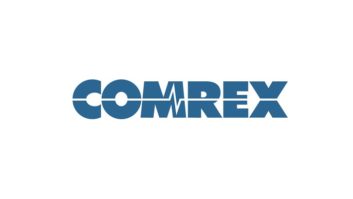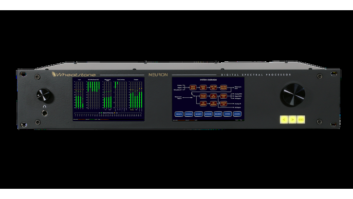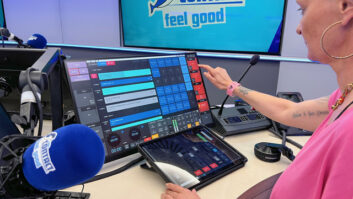ARLINGTON, VA. — Brian Markwalter gets excited when he thinks about how many smart speakers will end up in Christmas stockings this year. Markwalter’s job is to spot consumer trends in electronics, and he knows a good craze when he sees one.

Consumer demand for smart speakers like Amazon Echo and Google Home and the convenience that comes with them continues to push traditional radio further into the digital world, according to CTA’s research. Smart speakers and on-demand audio have quickly become in vogue when it comes to satisfying consumers’ appetite for audio consumption, including radio streaming.
Markwalter, senior vice president of research and standards for the Consumer Technology Association, gathers intelligence on consumer behavior and how they use radio. He offered a snapshot of that data at the IEEE Broadcast Technology Society’s Fall Broadcast Symposium this month in Arlington, Va.
FOCUS ON THE HOME
Markwalter’s technical program session focused on consumer trends in radio and TV. CTA produces objective market research, tracks sales data and forecasts trends.
“We do a variety of things at CTA, so when I do a talk I can tap into a variety of our products. We forecast industry sales of hardware and streaming services, which is at the center of this mix we see of radio listening and streaming and the connected experience in the audio space. We track sales of tabletop radios and those new smart speakers, which are playing a bigger role in listening experiences for consumers. And then we also do consumer research. So we will go out and survey on topics driven by our membership and interest in trends,” Markwalter said.
The CTA’s most recent findings come in the midst of the quickly evolving digital world of radio. The emergence of Amazon Echo and other connected smart speakers clearly is having an impact on in-home listening, Markwalter said, along with the quick ascent of consumer demand for wireless headphones, even though sales of traditional tabletop radios remain fairly steady.
“Stereo headphones continue to benefit from the transition into Bluetooth,” he said. “And those wireless ear buds are the ultimate smartphone companion.”
The increase in using voice for search queries is bringing consumers in contact more easily with radio station’s streams, he said. And asking the home assistant to play a radio station is just a start.
“Who knows how far this will go with the technology? At the same time radio faces extreme competition from on-demand audio services from Spotify, Amazon Music, Google Play and Apple Music,” he noted.
CTA estimates 80 million in-home smart speakers will have been sold by the end of this year, Markwalter said. “It really is phenomenal growth and has shaped a number of other adjacent categories.”
Smart speaker makers should ship north of 39 million units this year, according to CTA, then to climb to 44 million units in 2019.
In addition, some of the smart speakers are moving “upscale” with new product lines. “Including an amp for an Amazon receiver like product that is Alexa-enabled,” he said.
DELIVERY PREFERENCES
Markwalter said CTA research continues to show a shift in demand to streaming audio, especially among younger demos like millennials (ages 22–37) and Gen Z (ages 14–21).
“Daily listening for those two groups pegged radio as their third biggest source of daily audio consumption, trailing streaming and online music videos. Then it was digital downloads and podcasts rounding out the top five,” he said.
Markwalter said SiriusXM’s acquisition of Pandora, announced in September, will likely affect how audio is delivered in the connected car. SiriusXM has 36 million subscribers in North America; Pandora, which provides free and paid music streaming services, has more than 70 million monthly listeners.
“Sirius needed a strong play on the streaming side of things. That move is indicative of the changes in music-listening habits and going forward will likely require radio broadcasters to diversify even further and be present in the lives of their listeners in multiple ways,” Markwalter said.
In-car listening remains a significant part of consumers’ listening habits, he said, with added importance as more self-driving capabilities take over.
“Amazon’s recent hardware announcement included a product exclusively for the car to integrate the Alexa experience. I think we will see the propagation of digital assistants and smart speakers throughout our lives continue. And certainly digital assistants in cars. On-demand features are already being added to vehicles,” he said.
“The hands-free element will continue to grow as both the voice recognition improves and people get more comfortable with the technology.”

Markwalter, who has been with CTA since 2002, says the on-demand voice interface replaces a “browser interface” and will affect many industries, including radio and TV. “Once we saw Echo and Alexa and Siri and other digital assistants taking off, no matter what business you are in you better have a plan for this voice-activated interface. For example, I know NPR was an early adopter of the technology. You can simply ask Alexa to play NPR.”
At CTA’s Consumer Electronics Show earlier this year, Markwalter said, Ford featured a prototype with Alexa integration. “Recently Fiat Chrysler has announced plans to adopt Android as its customer-side entertainment system,” he said.
UPSCALING

According to CTA data that Markwalter collected for his presentation, sales of tabletop radios remain flat, he said.
“From our findings, traditional AM and FM listening is hanging in there. I don’t foresee the AM band going anywhere. It’s an older format, obviously, but in most cases audio manufacturers are still including it,” Markwalter said.
That’s good news for the 4,626 AM stations counted by the FCC in the United States. On the downside for AM, CTA’s research reveals a desire for consumers to experience better sound quality in the audio space.
“There have been some really cost-competitive bundles from Google, Apple and Amazon. For example, the Amazon Dot. But it clearly wasn’t about the audio quality; it simply wasn’t big enough to offer audio quality as an internet radio. But we are seeing an upscaling of that sector now. We see other companies, like Harman, which is known for quality audio, producing some tabletop and bedside hardware that have better audio,” Markwalter said.
As for HD Radio, Markwalter says it shows up in CTA’s research of source listening formats, but the group doesn’t specifically track unique HD Radio sales.
FM radio listenership via smartphones enabled with FM chips also remains very much on the fringe of consumer preferences.
He said the group did not drill down deep into podcasting.
Markwalter said a lot of groups, including radio broadcasters and streamers, are still trying to capture market share in the audio space.
“It’s a very competitive landscape. We are still in a period of shakeout. That is why the SiriusXM and Pandora mash up is intriguing to analysts wondering how it might shake up the marketplace.”
That said, the strength of radio remains the same: “What was strong about radio remains strong about radio, which is its availability, local content, convenience, no lack of connectivity and consistent coverage. All important in the eyes of consumers,” he said.
Markwalter’s final takeaway at the BTS session is that consumer audio technology is a robust sector with consumer spending very strong. “Interest in content audio remains very high. It’s amazing how much time people spend with their content, both audio and video. There’s a combination of devices available with connectivity that allow people to spend a lot of time listening to radio,” he said.







